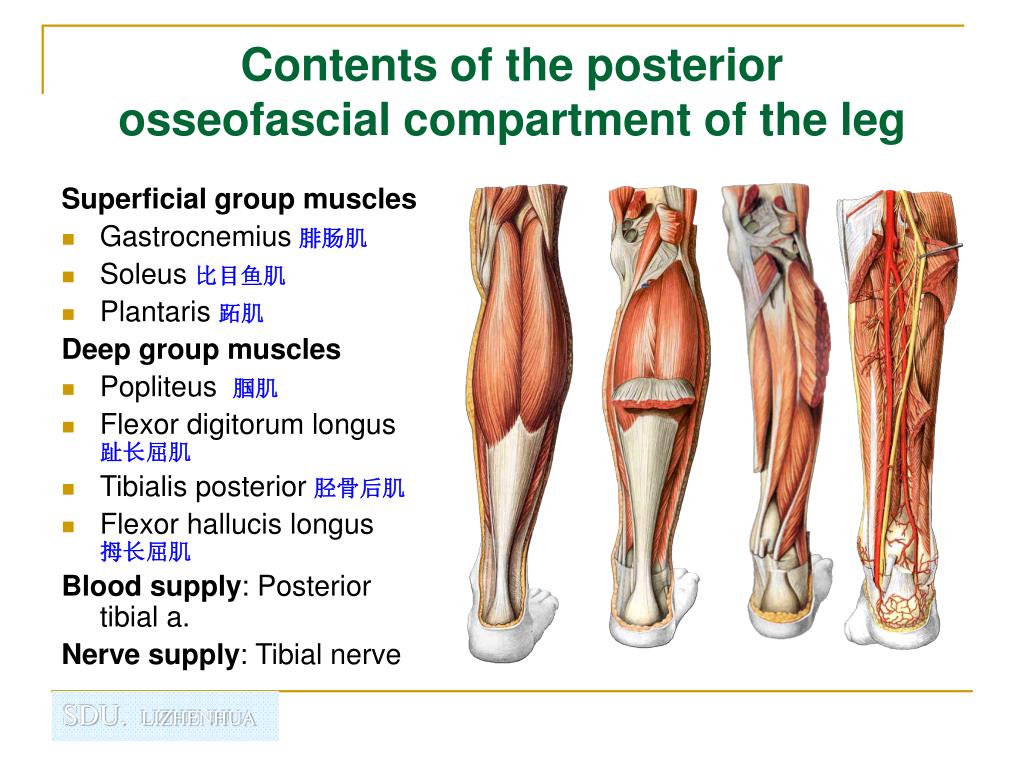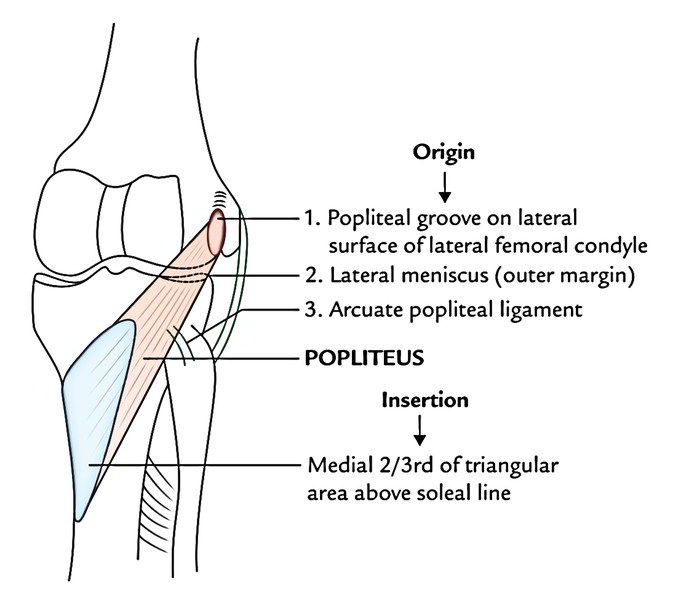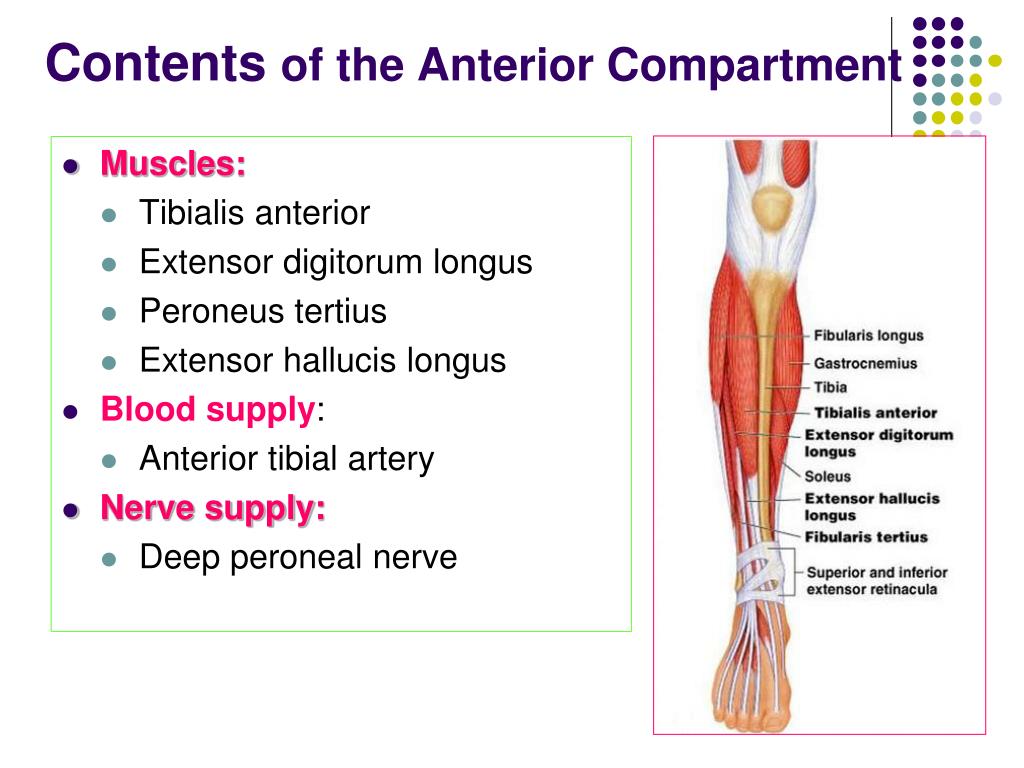
Ligaments are bands of connective tissue that surround a joint. Also called the kneecap, the patella serves as a point of attachment for different tendons and ligaments. It also allows for rotation and pivoting. In addition to bearing the weight of the upper body, the knee allows for walking, running, and jumping. The knee joins the upper leg and the lower leg. The adductors are five muscles located on the inside of the thigh. Try these three quadriceps stretches if you’re a runner. They allow the knees to straighten from a bent position. The quadriceps are four muscles located on the front of the thigh.
#Leg compartment muscles how to
Learn how to prevent and treat hamstring pain. The hamstrings are three muscles located on the back of the thigh. It can account for about a quarter of someone’s height. Also called the thigh bone, this is the longest bone in the body. It’s the area that runs from the hip to the knee in each leg. Your doctor might also advise you to switch to low-impact exercise.The upper leg is often called the thigh. That is often enough for the condition to settle. If you have chronic compartment syndrome, resting will help.
#Leg compartment muscles skin
If you have acute compartment syndrome you’ll need a surgeon to cut open the skin and fascia to ease the pressure in the affected compartment. How will I be treated for compartment syndrome?

If pain and swelling increase, see your doctor immediately. Tell your doctor or nurse if your bandages or plaster cast feel tight. How can I prevent acute compartment syndrome?Īfter an injury, you should elevate your arm or leg to reduce swelling. Your doctor will talk to you, examine you and measure the pressure inside the compartment.įIND A HEALTH SERVICE - The Service Finder can help you find doctors, pharmacies, hospitals and other health services. If your symptoms appeared after injury call triple zero (000) and ask for an ambulance or go immediately to an emergency department.ĪSK YOUR DOCTOR - Preparing for an appointment? Use the Question Builder for general tips on what to ask your GP or specialist. If you’re experiencing the symptoms listed above, you should see your doctor. pain or cramping during exercise that stops once the activity stopsĬHECK YOUR SYMPTOMS - Use the Symptom Checker and find out if you need to seek medical help.a tingling or burning sensation in your skinĬhronic compartment syndrome symptoms include:.increased pain and a feeling of tightness when you stretch affected muscles.intense pain - more painful than you might expect from your injury.What are the symptoms of compartment syndrome?Īcute compartment syndrome symptoms include: Repetitive exercise, such as running, cycling or rowing, can cause chronic compartment syndrome.ĪRE YOU AT RISK? - Are you at risk of type 2 diabetes, heart disease or kidney disease? Use the Risk Checker to find out. blood flow building up after blocked circulation.You can develop acute compartment syndrome after serious injury such as bone fracture, crush injury (for example, from a car accident) or surgery. It is a rare condition that occurs more often in the legs than the arms.

It is extremely painful and needs urgent treatment to prevent permanent damage.Ĭhronic compartment syndrome happens gradually, and is reversible. What are the types of compartment syndrome?Ĭompartment syndrome can be acute or chronic.Īcute compartment syndrome usually happens suddenly after severe injury. The sheath does not stretch easily, so if there is a build-up of blood or fluid inside the compartment, pressure can build up. What is a compartment?Ī compartment is a group of muscles enclosed in a tough sheath called fascia keeping the muscles together. When pressure reaches dangerous levels, it reduces blood flow, oxygen and nourishment to nerves and cells. High pressure can be caused by bleeding or swelling.




 0 kommentar(er)
0 kommentar(er)
